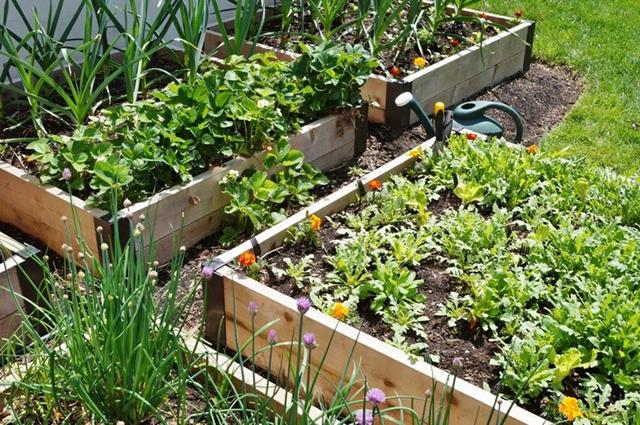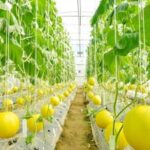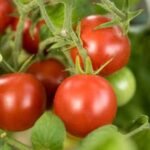Container gardening is a popular and convenient way for urban dwellers and those with limited outdoor space to still enjoy the benefits of growing their own vegetables. In this article, we’ll explore the world of container vegetable gardening and discover all the advantages it has to offer. From choosing the right containers to harvesting the fruits of your labor, we’ll cover everything you need to know to get started with your own thriving vegetable garden in containers.
With the increasing popularity of organic and sustainable living, more and more people are turning to container gardening as a way to grow their own fresh produce. Whether you have a small balcony, patio, or even just a sunny windowsill, you can create a vibrant and productive vegetable garden using containers.
By focusing on the key elements of container selection, plant care, and harvesting, container gardening allows you to enjoy the satisfaction of growing your own food regardless of space limitations.
In this article, we will cover important topics such as choosing the right containers for your vegetables based on size, material, and drainage needs. Additionally, we will discuss selecting the best vegetables for container gardening, creating a nutrient-rich environment for your plants with soil and fertilizer, watering and care tips for successful growth, and dealing with pests and diseases that may affect your container garden.
With these essential steps in mind, you can look forward to reaping a bountiful harvest from your very own container vegetable garden.
Choosing the Right Container
When it comes to container vegetable gardening, choosing the right containers is essential for the success of your garden. The size, material, and drainage of your containers can greatly impact the health and growth of your plants.
Firstly, it’s important to consider the size of the container. In general, larger containers are better for vegetables as they provide more room for root growth and retain moisture better than smaller ones. A good rule of thumb is to use containers that are at least 12 inches deep and 12 inches in diameter for most vegetable plants.
In addition to size, the material of the container is also critical. Plastic, wood, ceramic, and terra cotta are all popular choices for container gardening. Each has its own benefits and drawbacks – plastic is lightweight and retains moisture well, while wood provides insulation against temperature fluctuations. Choose a material based on your local climate and the needs of your specific plants.
Proper drainage is another crucial factor to consider when selecting containers for vegetable gardening. Without adequate drainage holes in the bottom of your containers, excess water can accumulate and lead to root rot or other issues. Be sure to drill or punch holes in the bottom of your containers if they don’t already have them.
| Container Size | Ideal Vegetables |
|---|---|
| At least 12 inches deep | Tomatoes, Peppers |
| 18 inches deep or more | Eggplant, Cucumbers |
Selecting the Best Vegetables for Container Gardening
When it comes to selecting the best vegetables for your container garden, there are a few factors to consider. Not all vegetables thrive in a container environment, so it’s important to choose varieties that are well-suited for this type of gardening. Here are some of the best vegetables to consider planting in your container garden:
- Tomatoes: Tomatoes are one of the most popular choices for container vegetable gardening. Look for compact or dwarf varieties that are specifically bred for small spaces.
- Peppers: Both sweet and hot peppers can be successfully grown in containers. Choose smaller-sized pepper plants that will fit well in your chosen containers.
- Lettuce and Salad Greens: Leafy greens like lettuce, spinach, and arugula are great options for container gardening. They have shallow root systems and can be easily grown in pots or window boxes.
- Cucumbers: There are compact bush cucumber varieties that do well in containers. Just make sure to provide a trellis or support for them to climb.
In addition to these vegetables, you can also consider growing herbs like basil, thyme, and parsley in your containers. These herbs not only thrive in small spaces but also add wonderful flavor to your home-cooked meals.
When choosing vegetables for your container garden, it’s essential to consider the space available as well as the growth habits of each plant. By selecting the right crops, you can enjoy a bountiful harvest from your container garden.
Finally, always ensure that you have proper drainage holes in your containers when selecting vegetables for planting. Well-drained soil is crucial for the success of your container vegetable garden.
Soil and Fertilizer
When it comes to container vegetable gardening, creating a nutrient-rich environment for your plants is essential for their growth and productivity. The soil you use in your containers plays a crucial role in providing the necessary nutrients for your vegetables to thrive. Here are some tips for selecting the right soil and fertilizers for your container garden:
- Choose a high-quality potting mix specifically formulated for container gardening. These mixes are designed to provide good drainage, adequate aeration, and the right balance of nutrients for container-grown plants.
- Avoid using garden soil in your containers, as it can become compacted and may contain weed seeds or pathogens that could harm your plants.
- Consider adding organic matter such as compost or well-rotted manure to your potting mix to improve its fertility and structure.
In addition to using the right soil, fertilizing your container vegetables is important for their overall health and productivity. Since container plants have limited space and resources, they rely on you to provide them with the nutrients they need to grow. Here are some fertilizer tips for container gardening:
- Choose a balanced fertilizer with equal parts of nitrogen, phosphorus, and potassium (such as a 10-10-10 or 20-20-20 formula).
- Follow the recommended application rates on the fertilizer label, as over-fertilizing can lead to nutrient imbalances or burn the roots of your plants.
- Consider using organic fertilizers like fish emulsion, compost tea, or seaweed extract for a natural option that feeds both your plants and the beneficial microorganisms in the soil.
By paying attention to your soil and fertilization practices, you can create an optimal growing environment for your container vegetable garden, leading to bountiful harvests of fresh produce right at your fingertips.
Watering and Care Tips for Container Vegetables
When it comes to container vegetable gardening, proper watering and care are crucial to the success of your plants. Unlike traditional gardening in the ground, containers have unique needs that must be addressed to ensure healthy growth and abundant harvests. This section will provide essential tips for watering and caring for your container vegetables.
Watering Your Container Vegetables
One of the most important aspects of caring for container vegetables is proper watering. Containers can dry out more quickly than garden beds, so it’s essential to monitor soil moisture regularly. The key is to keep the soil consistently moist, but not waterlogged. A good rule of thumb is to water when the top inch of soil feels dry to the touch. Be sure to water deeply, allowing the water to penetrate through the entire root zone.
Fertilizing Your Container Vegetables
In addition to regular watering, container vegetables require a steady supply of nutrients to support their growth and development. Choose a high-quality, balanced fertilizer specifically formulated for vegetables and apply it according to the package instructions. Liquid fertilizers can be particularly effective for container gardens as they are readily absorbed by the plants’ roots.
Caring for Your Container Vegetables
Beyond watering and fertilizing, container vegetable gardens benefit from regular maintenance tasks such as pruning, weeding, and monitoring for pests and diseases. Proper care will help your plants stay healthy and productive throughout the growing season, ultimately leading to a bountiful harvest of fresh, home-grown produce.
Creative Container Ideas
When it comes to container vegetable gardening, the options for creative and unique containers are endless. From traditional pots to hanging baskets, choosing the right container can not only add a decorative touch to your garden but also optimize the growing conditions for your vegetables.
One popular option for creative container gardening is using repurposed items such as old tires, wooden crates, or even plastic storage bins. These unconventional containers not only add visual interest to your garden but also provide a cost-effective and sustainable way to grow your vegetables.
Another creative idea for container gardening is vertical gardening. Utilizing vertical space with wall-mounted planters or tiered containers can maximize limited space and provide an opportunity to grow a variety of vegetables in a small area. This is especially great for urban gardeners or those with limited outdoor space.
In addition to traditional pots and repurposed items, hanging baskets are another great option for container vegetable gardening. Not only do they save space by utilizing vertical space, but they also add a beautiful aesthetic element to any garden or patio. Hanging baskets are particularly useful for trailing vegetables like cherry tomatoes or cucumbers, adding both visual interest and practicality to your container garden.
| Creative Container Ideas | Description |
|---|---|
| Repurposed Items | Using items like old tires or wooden crates for unique and cost-effective containers |
| Vertical Gardening | Utilizing wall-mounted planters or tiered containers to maximize limited space |
| Hanging Baskets | Adds visual interest and practicality to the garden by saving space and allowing trailing vegetables grow. |
Dealing With Pests and Diseases in Container Gardens
Prevention Is Key
One of the first steps in dealing with pests and diseases in your container vegetable garden is to prevent them from occurring in the first place. A well-maintained garden with proper watering, fertilizing, and care can help keep plants healthy and more resistant to pests and diseases. Regularly inspecting your plants for any signs of trouble such as discoloration, wilting, or chewed leaves can also help you catch any issues early on.
Natural Remedies
If you do encounter pests or diseases in your container garden, there are several natural remedies that you can try before resorting to chemical solutions. For example, introducing beneficial insects such as ladybugs or lacewings can help control aphids and other harmful pests.
Additionally, using neem oil or insecticidal soap can effectively combat common insect problems without harming your vegetables. For fungal diseases, a mixture of baking soda and water sprayed onto the plants can help prevent the spread of spores.
Isolation and Quarantine
If a plant in your container vegetable garden does become infested with pests or infected with a disease, it’s important to act quickly to isolate it from the other plants. This can help prevent further spread of the problem throughout your garden.
You may also need to quarantine new plants that you bring into your garden for a period of time to ensure they are not carrying any unwanted hitchhikers. By keeping a close eye on your container garden and taking swift action when needed, you can successfully manage pests and diseases without compromising the health of your vegetables.
Harvesting and Enjoying the Fruits of Your Container Vegetable Garden
After all the hard work and dedication put into your container vegetable garden, it’s finally time to reap the rewards of your labor. Harvesting your homegrown vegetables is not only a satisfying experience but also ensures that you are enjoying the freshest and most flavorful produce possible. When it comes to harvesting from your container garden, there are a few tips to keep in mind to make the most of your harvest.
One important factor to consider when harvesting from your container vegetable garden is timing. It’s essential to harvest each vegetable at the optimal time for peak flavor and texture.
For example, tomatoes should be picked when they are fully ripe but still firm, while lettuces taste best when their leaves are young and tender. Regularly checking on the progress of your vegetables and learning about their specific harvesting requirements will ensure that you are enjoying the best quality produce from your containers.
Another aspect to consider is how to properly harvest your vegetables without causing damage to the plant or neighboring fruits. Using sharp scissors or pruners for herbs and leafy greens can help prevent unnecessary stress on the plant, while gently twisting or cutting larger fruits like peppers or eggplants can ensure a clean break without harming the plant. Being mindful of how you harvest can promote continued growth and future yields from your container garden.
Finally, once you have harvested your delicious homegrown vegetables, it’s time to enjoy them in a variety of culinary creations. From fresh salads with vibrant greens to flavorful stir-fries with crisp bell peppers and tender snap peas, there are endless possibilities for incorporating your container-grown produce into tasty dishes.
Whether enjoyed on their own or shared with friends and family, nothing beats the satisfaction of savoring vegetables that were nurtured from seedlings into ripe, flavorful treasures within the confines of a container garden.
Conclusion
In conclusion, container vegetable gardening offers a myriad of benefits and can be incredibly rewarding. From the convenience of being able to grow your own food in limited spaces to the ability to move your plants to optimize sun exposure, there are numerous advantages to this method of gardening. Choosing the right container, selecting the best vegetables, providing proper soil and fertilizer, and mastering watering and care techniques are all essential components of successful container gardening.
By utilizing creative container ideas such as pots or hanging baskets, you can add a decorative element to your garden while maximizing your growing space. However, it’s important to remain vigilant for potential pests and diseases that may impact your container garden. Taking proactive measures to prevent and address these issues is crucial for maintaining healthy plants.
Ultimately, the joy of growing your own vegetables in containers cannot be overstated. Not only are you able to enjoy fresh produce that you’ve nurtured from seed or seedling to harvest, but there is also a sense of pride and accomplishment in being able to provide for yourself and your family.
Whether you’re a seasoned gardener or new to the world of horticulture, container vegetable gardening is a fulfilling endeavor that is well worth the effort. So roll up your sleeves, get your hands dirty, and enjoy the bountiful rewards of your very own container vegetable garden.
Frequently Asked Questions
What Is the Best Container to Grow Vegetables In?
The best container to grow vegetables in depends on the type of vegetable being grown. For shallow-rooted vegetables like lettuce or herbs, a smaller container can work, while deep-rooted vegetables like tomatoes or peppers require larger, deeper containers.
What Pots to Use for Vegetable Garden?
When choosing pots for a vegetable garden, it’s important to consider the size and drainage. Look for pots that are large enough to accommodate the root system of the vegetable being grown and ensure they have adequate drainage holes to prevent waterlogging.
How Deep Do Containers Need to Be to Grow Vegetables?
Containers need to be sufficiently deep to accommodate the root depth of the vegetables being grown. For shallow-rooted vegetables, a depth of 6-8 inches may suffice, while deep-rooted vegetables like carrots or potatoes may require containers that are 12 inches or deeper to allow for proper root development.

If you’re looking to get into vegetable gardening, or are just looking for some tips on how to make your current garden better, then you’ve come to the right place! My name is Ethel and I have been gardening for years. In this blog, I’m going to share with you some of my best tips on how to create a successful vegetable garden.





